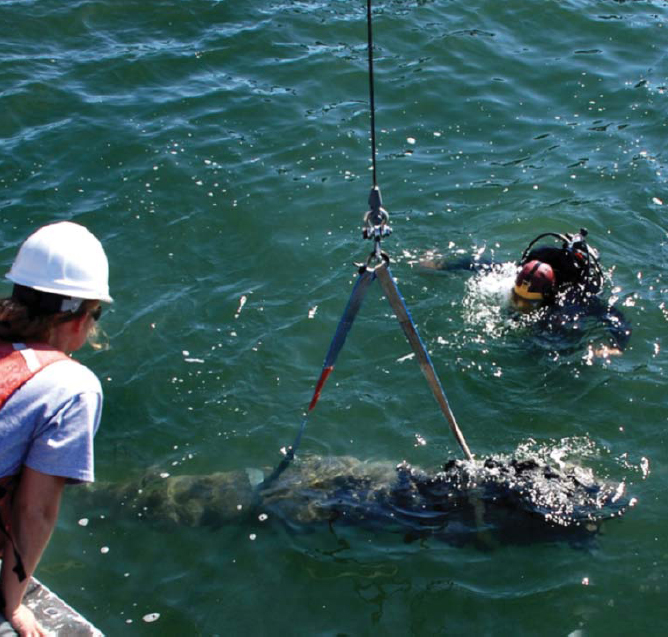
The events of November 1718 formed a pivotal part in the war against piracy. Governor Spotswood’s message had been clear and unequivocal. Piracy didn’t pay. The pirate scourge would continue for several more years, but this attack, together with the establishment of British rule in the Bahamas, effectively marked the beginning of the end for piracy in the Americas. In the Bahamas Governor Rogers hanged any pirates who were caught after returning to their old ways, as a warning to the others.
One other event underlined the point. After being abandoned by Teach, Stede Bonnet headed south, and found a temporary refuge in the Cape Fear River. It was there that he was discovered and captured by two pirate-hunting sloops sent out from Charles Town. Ironically, they were looking for Blackbeard, but the unfortunate Bonnet was caught instead. He and his men were tried in Charles Town, and in December 1718 they were hanged. The mass pirate executions in Charles Town, Williamsburg and New Providence all played an important part in discouraging other former pirates from recrossing the line.
This all formed part of a wider strategy. While Blackbeard’s blockade of Charles Town had caused a sensation in colonial America, it was merely the most daring of a number of pirate attacks that were undermining maritime trade, from Newfoundland to Brazil, off the West African coast, and in the Indian Ocean. The ‘carrot and stick’ policy of George I’s government was effective, but in 1718 there was little sign that the policy was working, as those pirates who refused the pardon or who reverted to piracy continued the depredations. The closing of the Bahamas to them merely drove some of them elsewhere, to new hunting grounds off the slave coasts of West Africa, or the waters off Madagascar.
The operation against Blackbeard marked the start of the ‘stick’. In the years that followed the other notorious pirates of the age would be cornered, captured and either killed or executed – men like ‘Black Sam’ Bellamy, ‘Calico Jack’ Rackam, Charles Vane, George Lowther, and ‘Black Bart’ Roberts. By 1722 the worst had passed, and while a few pirates remained at large, the great scourge was effectively over.
Two years later, in May 1724, Captain Charles Johnson published his General History of Pyrates, a book that became an instant bestseller. It remains in print today. Some argue that Johnson was a nom de plume for Daniel Defoe, but unfortunately the author’s identity remains a mystery. However, his retelling of the tale of Blackbeard was the first stage in the process that turned a man who was merely a dangerous and notorious criminal into one of the most easily recognized pirates in history. As a result, Blackbeard became a figure of legend – a myth more than a man. This book is an attempt to uncover the real Blackbeard, and to unravel the events surrounding his death, in what was probably the most dramatic anti-piracy raid of ‘The Golden Age of Piracy’.

Archaeologists recovering a concretion-encrusted gun – a cast-iron 6-pounder – from the wreck of Blackbeard’s flagship Queen Anne’s Revenge. After extensive conservation the weapon formed part of the collection of the North Carolina Maritime Museum.